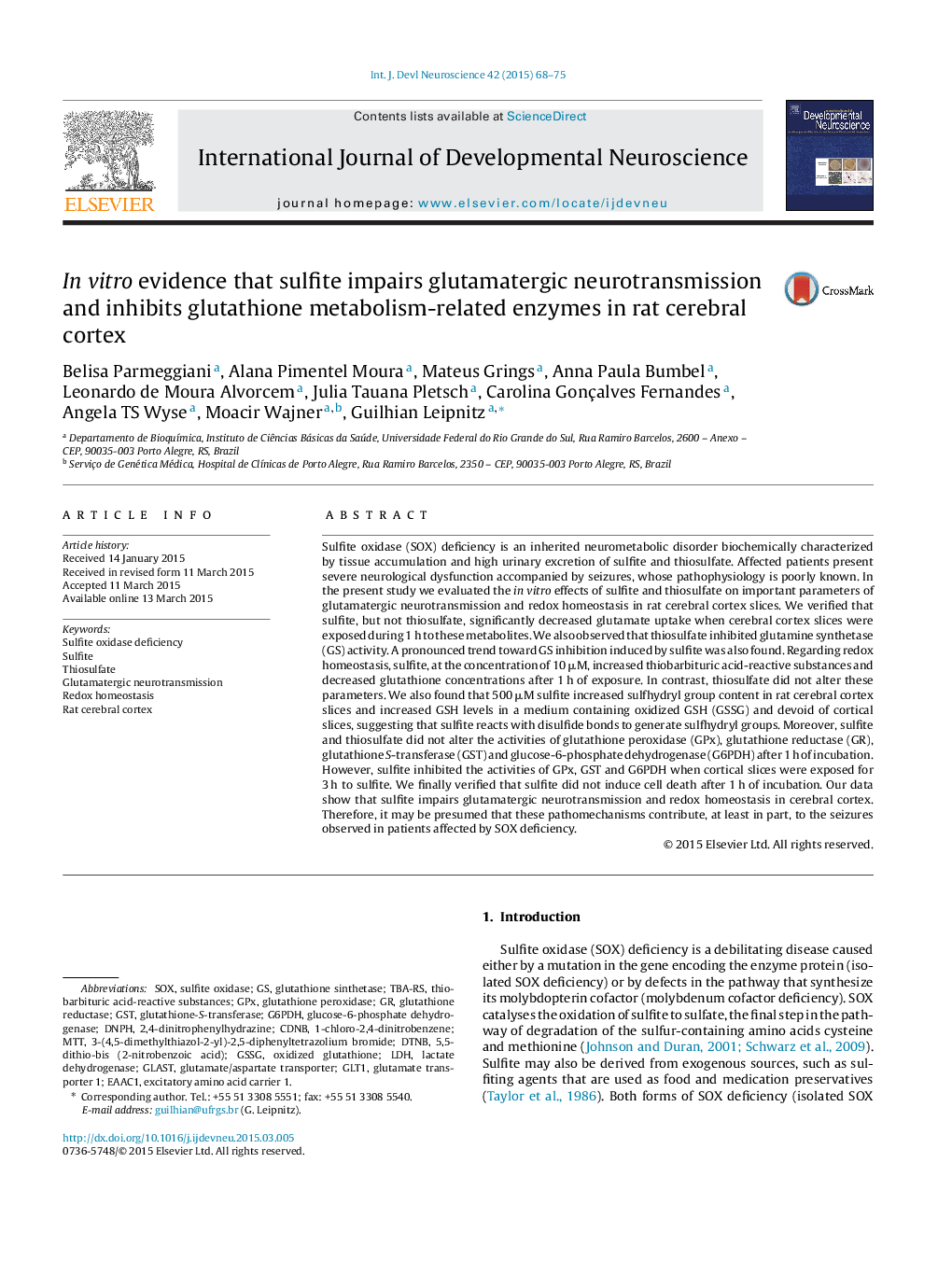| Article ID | Journal | Published Year | Pages | File Type |
|---|---|---|---|---|
| 2785877 | International Journal of Developmental Neuroscience | 2015 | 8 Pages |
•Sulfite and thiosulfate accumulate in sulfite oxidase (SOX) deficiency.•Sulfite reduces glutamate uptake.•Sulfite and thiosulfate inhibit glutamine synthetase activity in brain cortex.•Sulfite inhibits glutathione metabolism-related enzymes.•Glutamatergic transmission disruption contributes to brain damage in SOX deficiency.
Sulfite oxidase (SOX) deficiency is an inherited neurometabolic disorder biochemically characterized by tissue accumulation and high urinary excretion of sulfite and thiosulfate. Affected patients present severe neurological dysfunction accompanied by seizures, whose pathophysiology is poorly known. In the present study we evaluated the in vitro effects of sulfite and thiosulfate on important parameters of glutamatergic neurotransmission and redox homeostasis in rat cerebral cortex slices. We verified that sulfite, but not thiosulfate, significantly decreased glutamate uptake when cerebral cortex slices were exposed during 1 h to these metabolites. We also observed that thiosulfate inhibited glutamine synthetase (GS) activity. A pronounced trend toward GS inhibition induced by sulfite was also found. Regarding redox homeostasis, sulfite, at the concentration of 10 μM, increased thiobarbituric acid-reactive substances and decreased glutathione concentrations after 1 h of exposure. In contrast, thiosulfate did not alter these parameters. We also found that 500 μM sulfite increased sulfhydryl group content in rat cerebral cortex slices and increased GSH levels in a medium containing oxidized GSH (GSSG) and devoid of cortical slices, suggesting that sulfite reacts with disulfide bonds to generate sulfhydryl groups. Moreover, sulfite and thiosulfate did not alter the activities of glutathione peroxidase (GPx), glutathione reductase (GR), glutathione S-transferase (GST) and glucose-6-phosphate dehydrogenase (G6PDH) after 1 h of incubation. However, sulfite inhibited the activities of GPx, GST and G6PDH when cortical slices were exposed for 3 h to sulfite. We finally verified that sulfite did not induce cell death after 1 h of incubation. Our data show that sulfite impairs glutamatergic neurotransmission and redox homeostasis in cerebral cortex. Therefore, it may be presumed that these pathomechanisms contribute, at least in part, to the seizures observed in patients affected by SOX deficiency.
